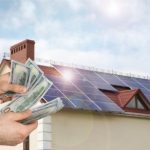Understanding Solar Panel Efficiency and Trump’s Tariffs:
Solar panels work by converting sunlight into electricity through the photovoltaic effect. However, their efficiency is influenced by various factors, including the angle of incidence of sunlight, temperature, and shading. Additionally, manufacturing costs significantly impact the affordability and accessibility of solar energy.
During the Trump administration, tariffs were imposed on imported solar panels and related equipment, particularly targeting Chinese manufacturers. These tariffs aimed to protect domestic solar panel manufacturers but inadvertently increased costs for solar projects, thereby slowing down the growth of the solar industry in the United States.
The Role of Mirrors in Enhancing Solar Panel Output:
Mirrors have long been utilized to concentrate sunlight for various applications, such as solar thermal power generation. By reflecting and focusing sunlight onto a smaller area, mirrors can significantly increase the intensity of sunlight reaching solar panels, thereby enhancing their output. This concept, known as concentrated solar power (CSP), has been employed in large-scale solar power plants but is now being explored for smaller-scale applications, including residential and commercial installations.
One approach involves installing mirrors, known as concentrators or reflectors, around solar panels to redirect and concentrate sunlight onto the panels’ surface. This increases the amount of energy absorbed by the solar cells, thereby improving overall efficiency. Additionally, mirror systems can be adjusted throughout the day to track the sun’s movement, optimizing sunlight capture.
Benefits of Mirror-Enhanced Solar Panels:
- Increased Efficiency: By concentrating sunlight onto solar panels, mirror systems can boost energy production, improving the overall efficiency of solar installations. This increase in efficiency helps maximize the return on investment for solar projects, making them more economically viable.
- Cost Reduction: With higher energy output per unit area, mirror-enhanced solar panels require fewer panels to generate the same amount of electricity, reducing overall material and installation costs. This cost reduction can help offset the impacts of tariffs on solar equipment, making solar energy more competitive in the market.
- Versatility: Mirror-enhanced solar panels can be deployed in various settings, including residential rooftops, commercial buildings, and utility-scale solar farms. Their flexibility allows for customization according to specific energy needs and available space, making them suitable for diverse applications.
- Energy Security and Independence: By harnessing sunlight, a renewable and abundant resource, mirror-enhanced solar panels contribute to energy security and independence, reducing reliance on fossil fuels and foreign energy sources.
Overcoming Challenges and Implementation:
While mirror-enhanced solar panels offer significant benefits, several challenges must be addressed for widespread implementation. These include:
- Technological Development: Further research and development are needed to optimize mirror systems for different environments and applications. Advances in materials, tracking mechanisms, and installation techniques can enhance performance and reliability.
- Regulatory Support: Policymakers play a crucial role in supporting the adoption of mirror-enhanced solar technology through incentives, subsidies, and regulatory frameworks that promote renewable energy deployment. Clear policies can incentivize investment in solar projects and mitigate the impact of tariffs on imported equipment.
- Public Awareness and Acceptance: Educating the public about the benefits of mirror-enhanced solar panels and dispelling misconceptions about solar energy can increase acceptance and uptake. Public engagement efforts can foster community support for solar projects and encourage individuals and businesses to transition to renewable energy sources.
Conclusion:
Mirror-enhanced solar panels represent a promising innovation in the field of renewable energy, offering a viable solution to enhance solar panel efficiency and overcome challenges such as tariffs imposed on solar equipment. By concentrating sunlight onto solar panels, mirrors can increase energy output, reduce costs, and contribute to the transition towards a sustainable energy future. With continued technological advancements and supportive policies, mirror-enhanced solar technology has the potential to play a significant role in mitigating climate change and securing a clean energy supply for future generations.








